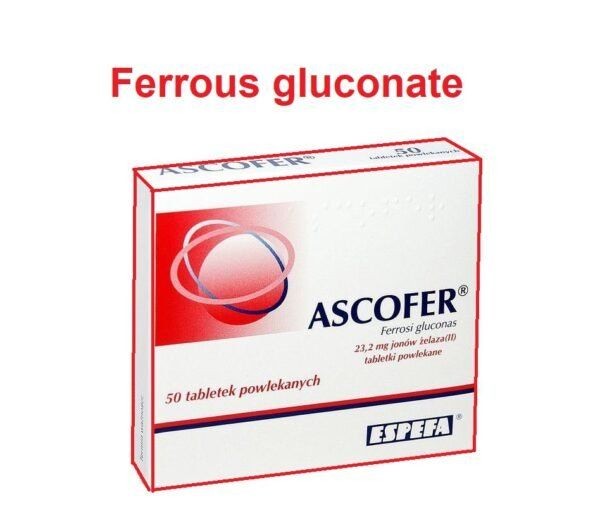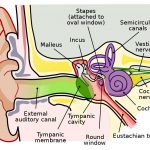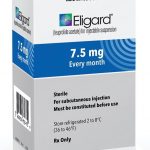
Contents
Ferrous Gluconate: An Essential Oral Iron Supplement for Anemia
Ferrous gluconate is an oral iron product used to prevent and treat iron deficiency anemia. It serves as a supplemental source of iron when dietary intake is insufficient. Dietary sources of iron include lean meat, poultry, seafood, kidney beans, lentils, spinach, peas, nuts, and fortified foods. Ferrous gluconate is available over the counter (OTC) in the U.S.
Iron is a vital component of hemoglobin, the protein in red blood cells responsible for oxygen transport to tissues, and myoglobin, the muscle protein that stores and releases oxygen. Additionally, iron plays a crucial role in various cellular processes, enzyme and hormone synthesis, DNA repair, electron transport, and energy metabolism.
Women, particularly those who experience menstrual bleeding, require higher iron intake. Pregnant women also often rely on iron supplements due to increased iron needs during pregnancy and breastfeeding. However, it’s important to note that iron overdose can be toxic and potentially fatal for children under the age of 6.
Warnings
- Avoid ferrous gluconate if you have a hypersensitivity to any of its components.
- If you have disorders that cause iron buildup in the body, such as hemochromatosis or hemosiderosis, or experience premature red blood cell destruction (hemolysis), ferrous gluconate should be avoided.
Side Effects of Ferrous Gluconate
Common side effects of ferrous gluconate include:
- Nausea
- Vomiting
- Gastrointestinal irritation
- Stomach cramping
- Heartburn
- Diarrhea
- Constipation
- Dark-colored stools
- Discoloration of urine
- Staining of teeth
If you experience any of the following symptoms or serious side effects, immediately contact your doctor:
- Fast or pounding heartbeats, fluttering in your chest, shortness of breath, or sudden dizziness
- Severe headache, confusion, slurred speech, severe weakness, vomiting, loss of coordination, feeling unsteady
- Severe nervous system reaction with very stiff muscles, high fever, sweating, confusion, fast or uneven heartbeats, tremors, and feeling like you might pass out
- Blurred vision, tunnel vision, eye pain or swelling, or seeing halos around lights
Please note that this is not an exhaustive list of side effects. Contact your doctor for medical advice or report any adverse reactions to the FDA at 1-800-FDA-1088.
Dosages of Ferrous Gluconate
Tablet (Ferate, generic)
- 240 mg (27 mg elemental iron)
- 324 mg (38 mg elemental iron)
Adults:
Iron Deficiency Anemia
- Treatment: 60 mg elemental Fe orally every 6-12 hours
- Prophylaxis: 60 mg elemental Fe orally once daily
Recommended Daily Intake
- Men: 8 mg elemental Fe orally once daily
- Women: 18 mg elemental Fe orally once daily
- Pregnant women: 27 mg elemental Fe orally once daily
- Lactating women: 9 mg elemental Fe orally once daily
Geriatric:
- Lower doses of 10-50 mg elemental iron/day are recommended to minimize gastrointestinal adverse events
Pediatric:
Iron Deficiency Anemia
- Treatment: 3-6 mg elemental Fe/kg/day orally
- Prophylaxis: 1-2 mg elemental Fe/kg/day orally; not to exceed 15 mg/day
Recommended Daily Intake
- Children 0-6 months: 0.27 mg elemental Fe orally once daily
- Children 7-12 months: 11 mg elemental Fe orally once daily
- Children 1-3 years: 7 mg elemental Fe orally once daily
- Children 4-8 years: 10 mg elemental Fe orally once daily
- Children 9-13 years: 8 mg elemental Fe orally once daily
- Children 14-18 years:
- Males: 11 mg elemental Fe orally once daily
- Females: 15 mg elemental Fe orally once daily
- Pregnant females: 27 mg elemental Fe orally once daily
- Lactating females: 10 mg elemental Fe orally once daily
Overdose
- The symptoms of acute iron overdose include abdominal pain, nausea, vomiting, diarrhea, low blood pressure (hypotension), rapid heart rate (tachycardia), metabolic acidosis, liver damage, jaundice, hypoglycemia, kidney failure, pulmonary edema, lethargy, shock, and coma.
- Iron overdose is particularly dangerous for children under 6 years of age and can be fatal.
- Treatment for overdose involves symptomatic and supportive care.
Drug Interactions
Inform your doctor about all medications you are currently taking to check for possible drug interactions. Do not start, discontinue, or alter the dosage of any medication without consulting your doctor.
- Ferrous gluconate has no severe interactions with other drugs.
- Serious interactions with ferrous gluconate include:
- baloxavir marboxil
- demeclocycline
- doxycycline
- eltrombopag
- fleroxacin
- gemifloxacin
- levofloxacin
- minocycline
- moxifloxacin
- mycophenolate
- ofloxacin
- oxytetracycline
- tetracycline
- acetohydroxamic acid
- calcium acetate
- calcium carbonate
- calcium chloride
- calcium citrate
- calcium gluconate
- carbidopa
- didanosine
- gymnema
- manganese
- vitamin E
These drug interactions listed above are not exhaustive. To learn more about drug interactions, consult the RxList Drug Interaction Checker.
Always inform your doctor, pharmacist, or healthcare provider about all prescription and over-the-counter medications you are taking, along with their corresponding dosages. Keep a record of this information. If you have any questions about the medication, consult your doctor or healthcare provider.
Pregnancy and Breastfeeding
- During pregnancy, iron requirements increase. Untreated iron deficiency and anemia can lead to low birth weight, preterm birth, or newborn mortality.
- Supplemental ferrous gluconate intake in recommended doses is safe during pregnancy to prevent iron deficiency.
- Iron is present in breast milk and is considered safe for breastfeeding. Breast milk provides enough iron to meet the infant’s requirements, regardless of the mother’s iron status.
- If you are pregnant or breastfeeding, do not take any OTC products, including ferrous gluconate, without consulting your healthcare provider.
Additional Information
- Follow the instructions for taking ferrous gluconate precisely. Do not exceed recommended dosages, as iron overdose can have severe consequences.
- Safely store ferrous gluconate in child-resistant containers and keep it out of reach of children. Accidental overdose of iron-containing products is a leading cause of fatal poisoning in children under 6 years of age.
- If an overdose occurs, seek immediate medical assistance or contact Poison Control.
By submitting this form, you agree to the Terms & Conditions and Privacy Policy of MedicineNet. You can unsubscribe from MedicineNet’s subscriptions at any time.
Summary
Ferrous gluconate is an oral iron supplement used to prevent and treat iron deficiency anemia. It serves as a supplemental source of iron when dietary intake is insufficient. Common side effects of ferrous gluconate include nausea, vomiting, gastrointestinal irritation, stomach cramping, heartburn, diarrhea, constipation, dark-colored stools, discoloration of urine, and staining of teeth.


